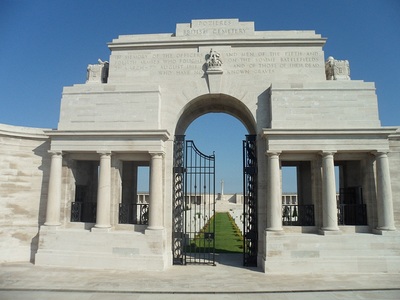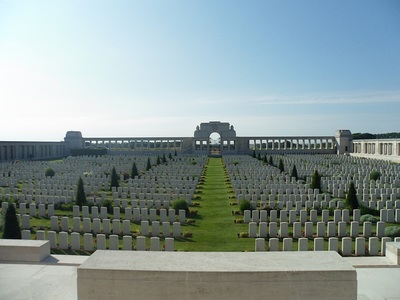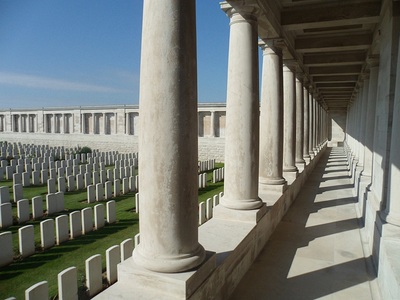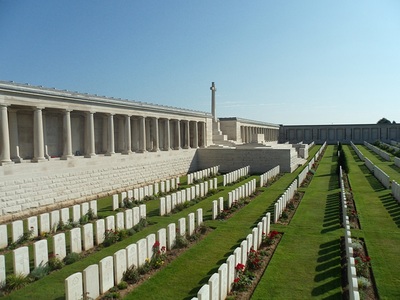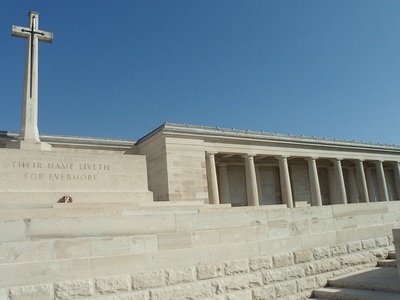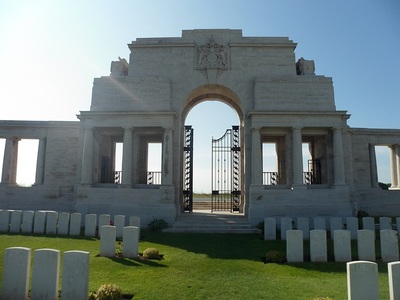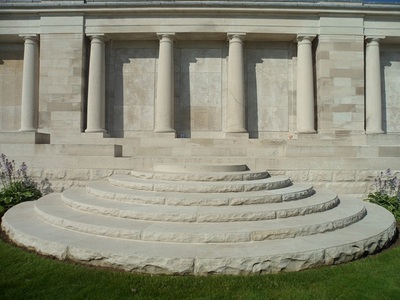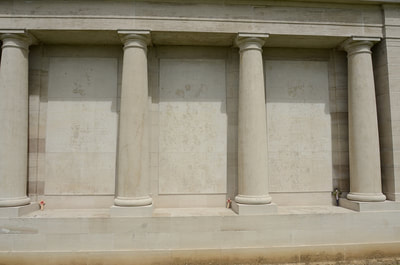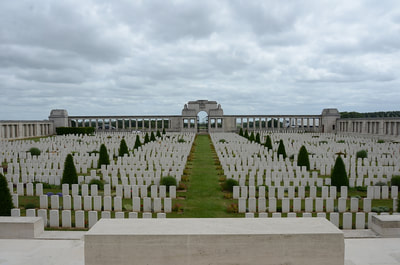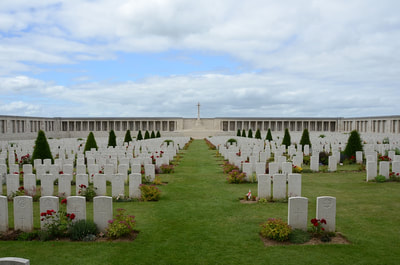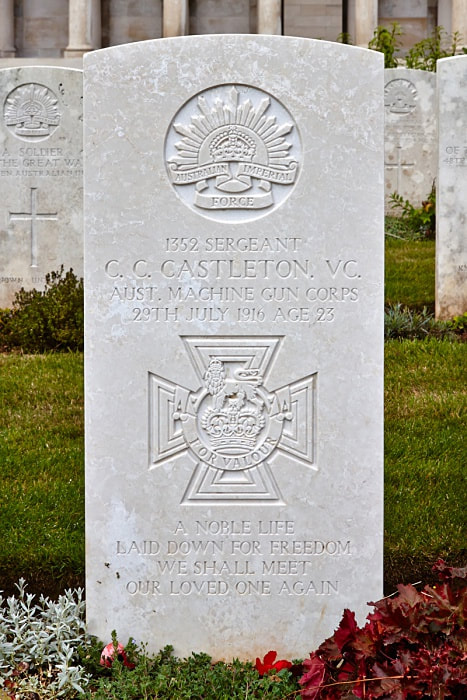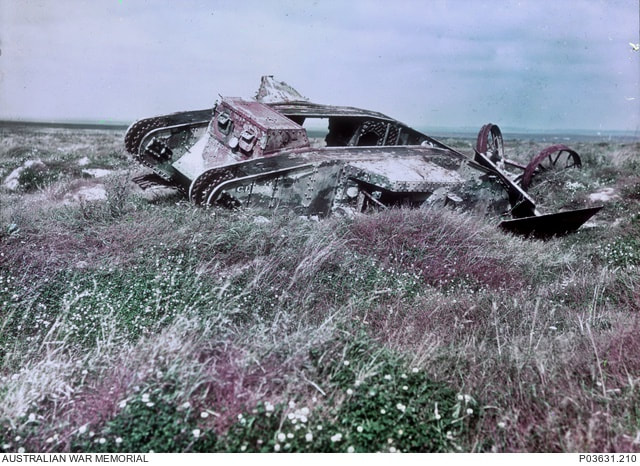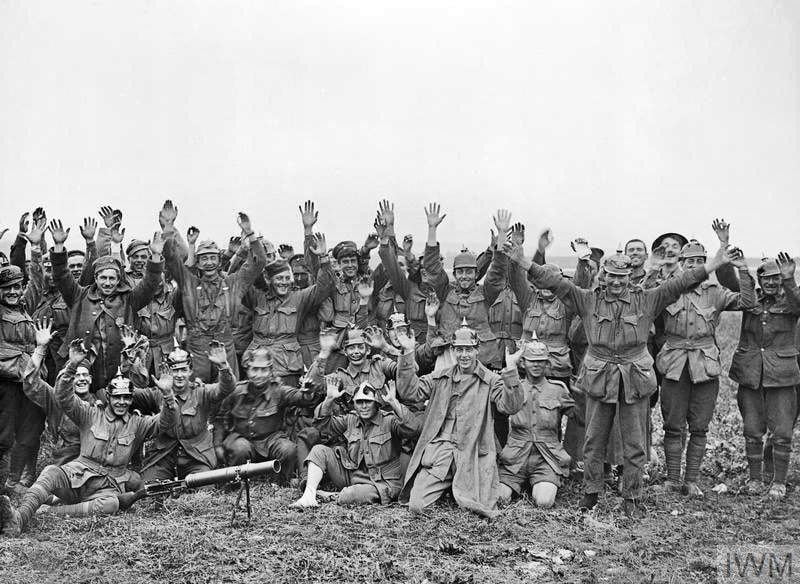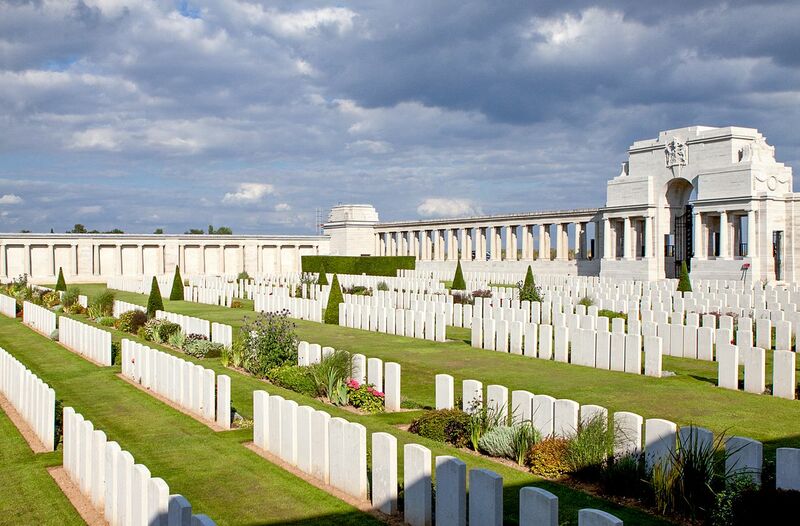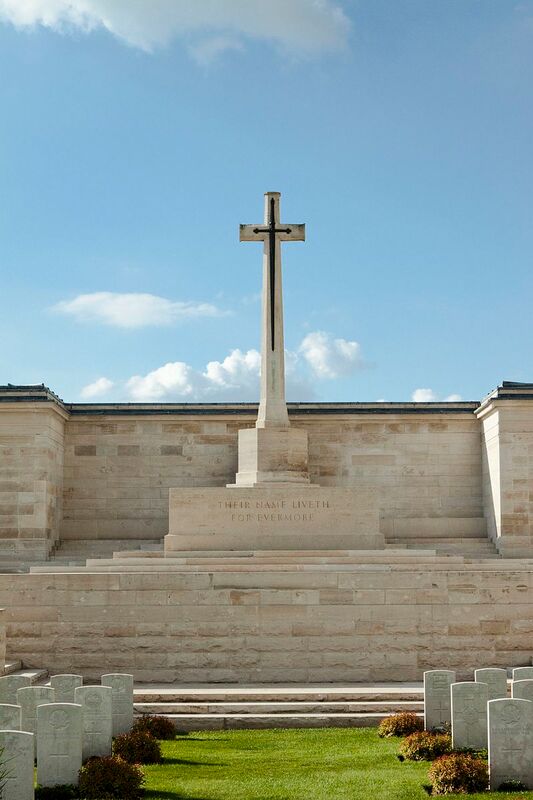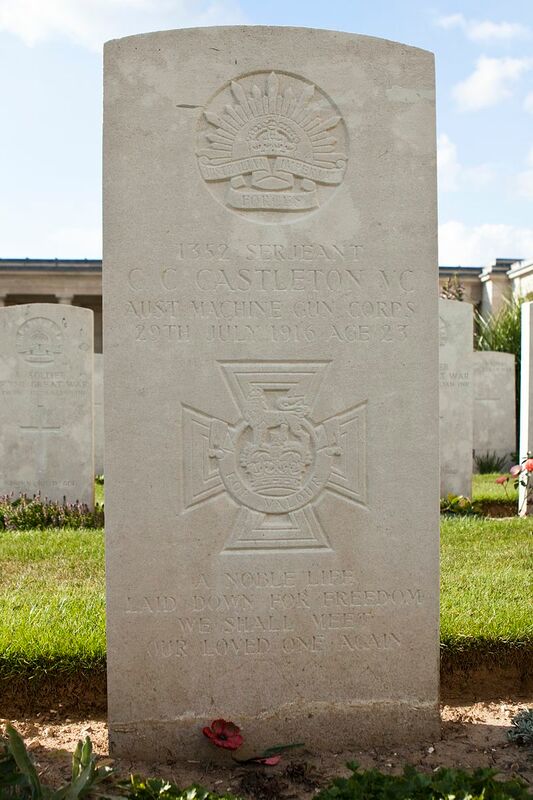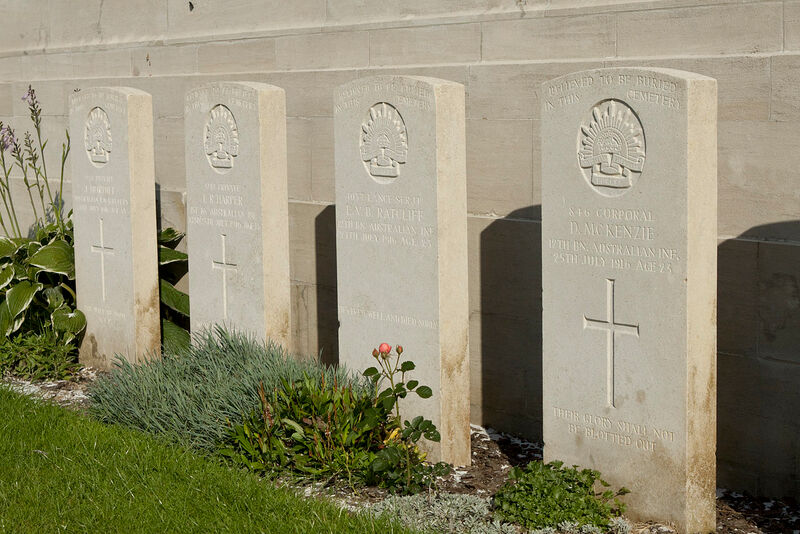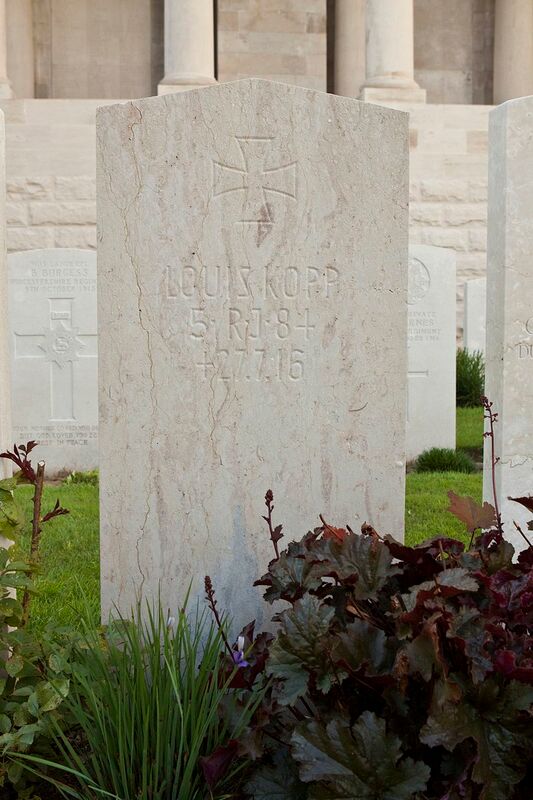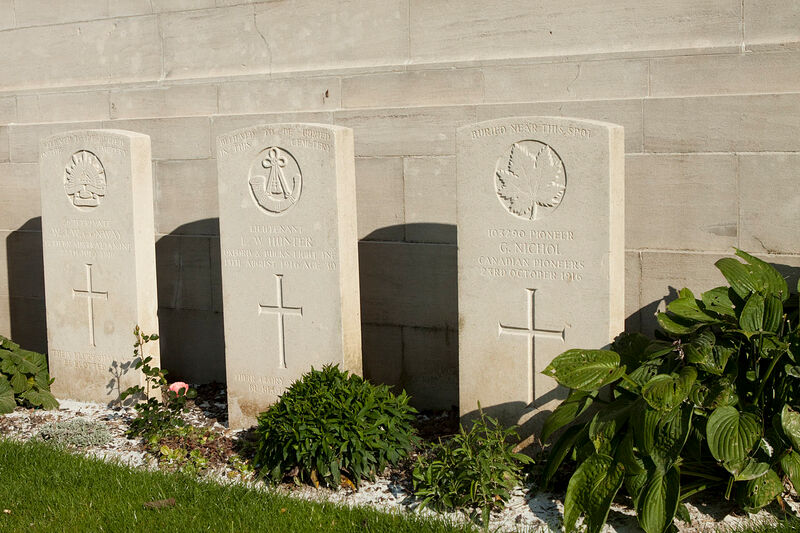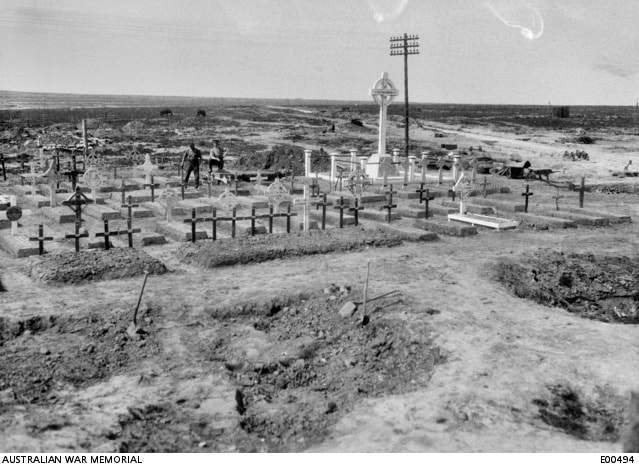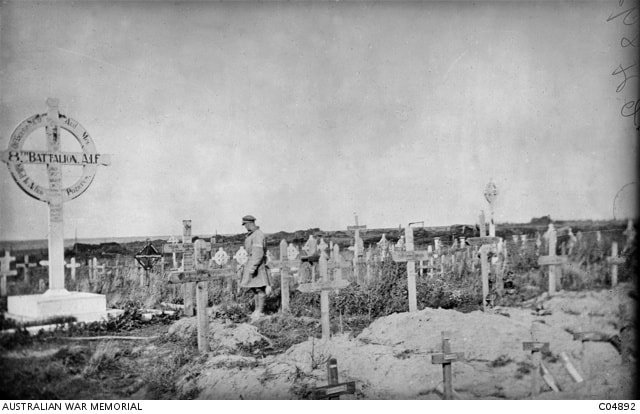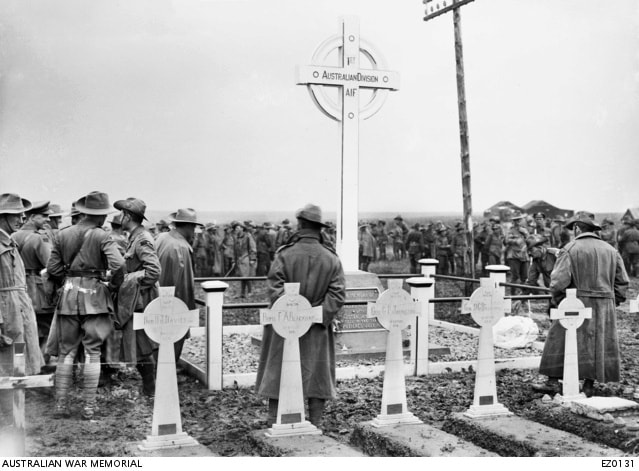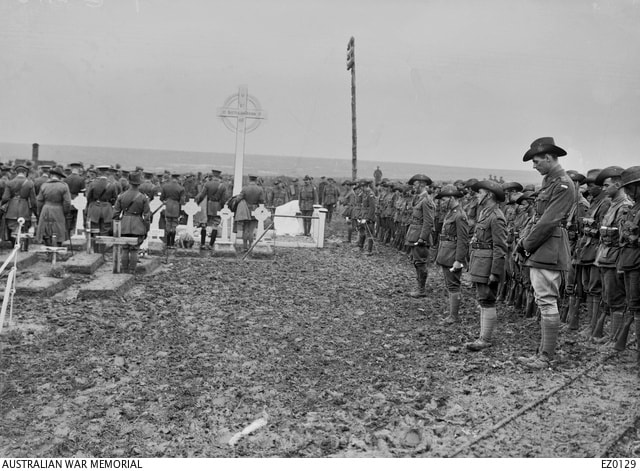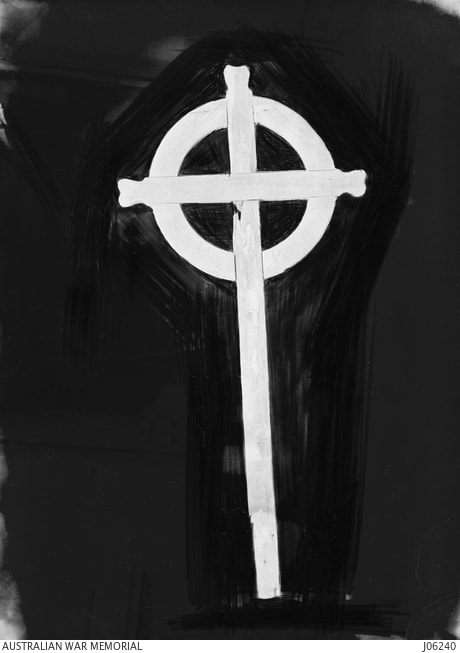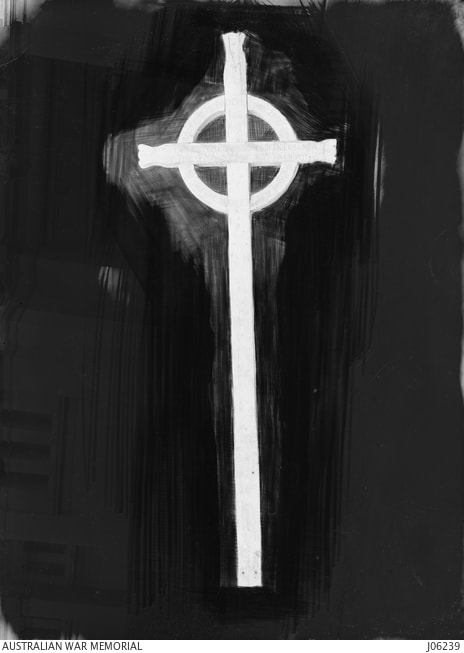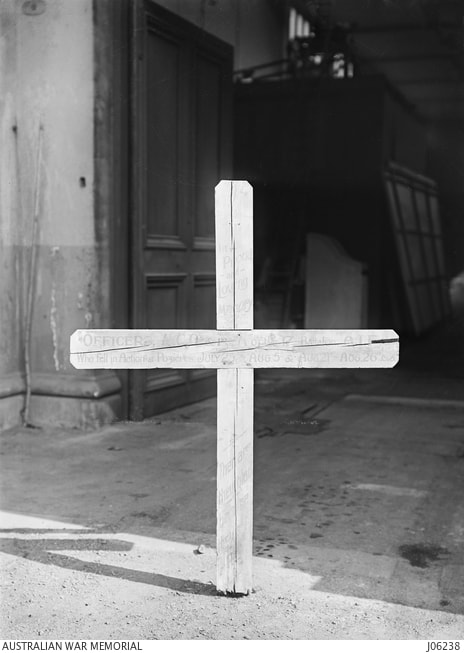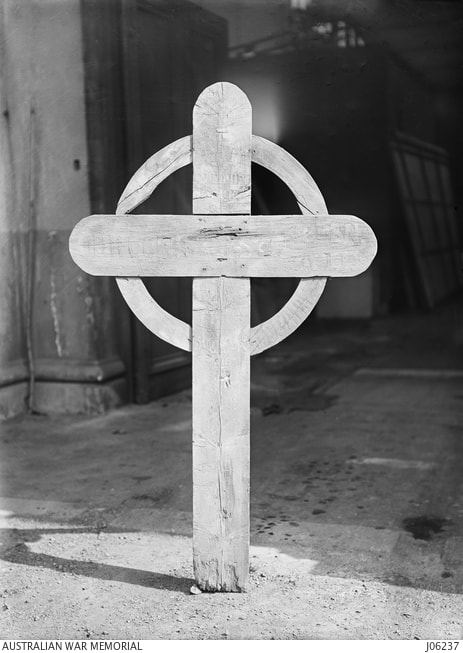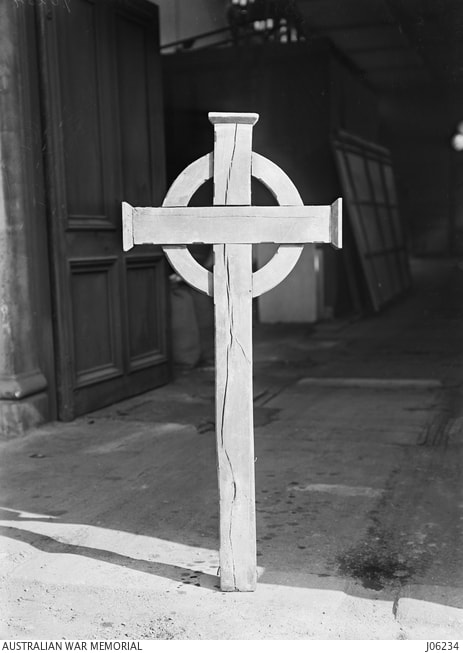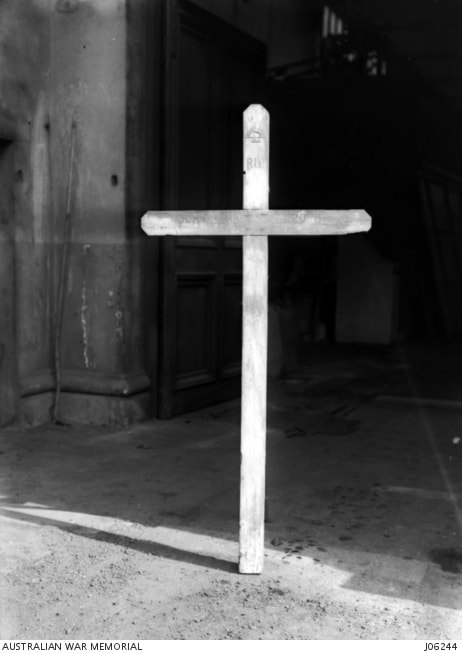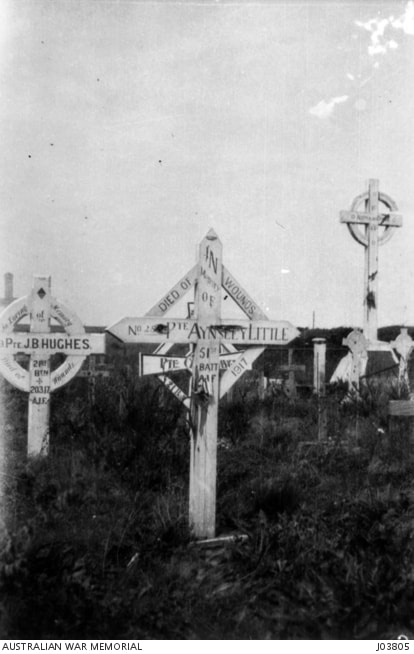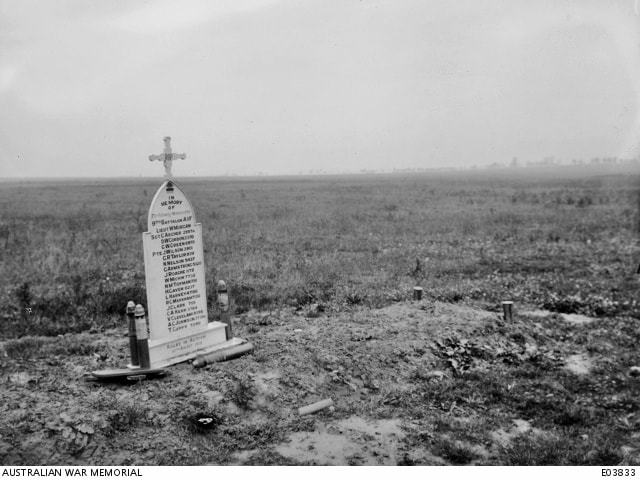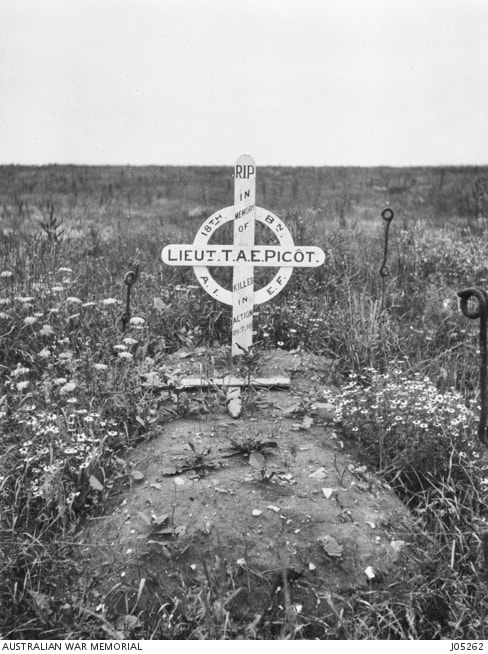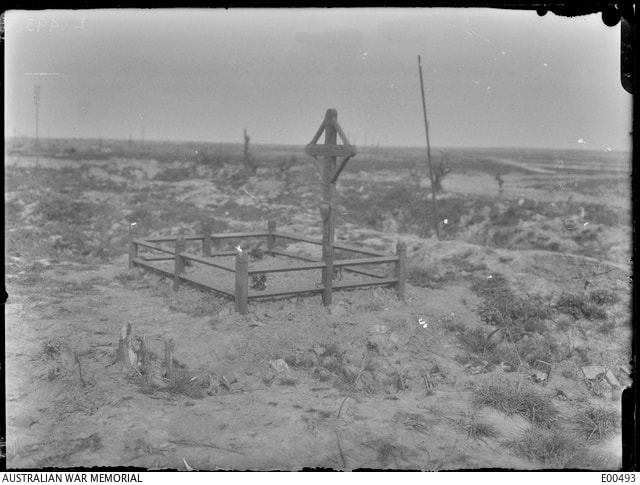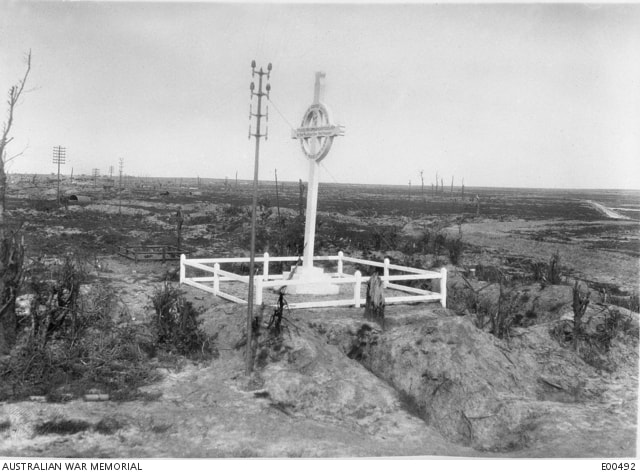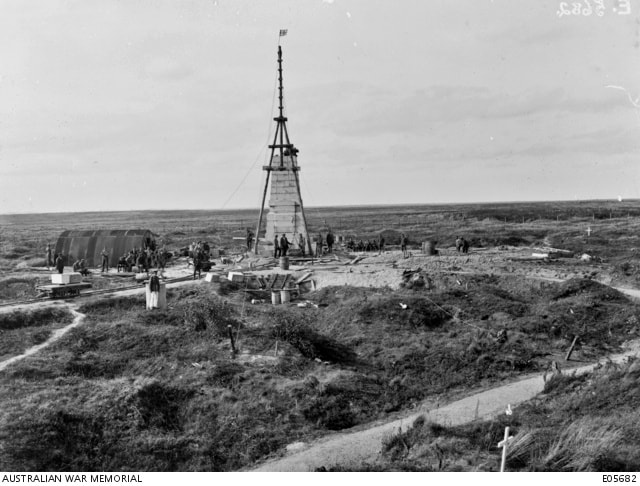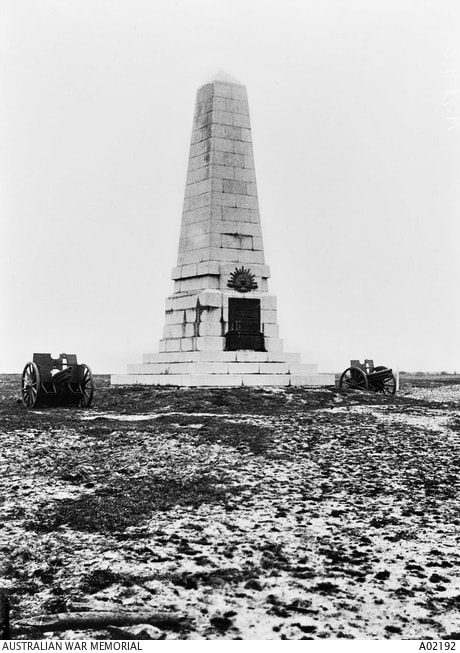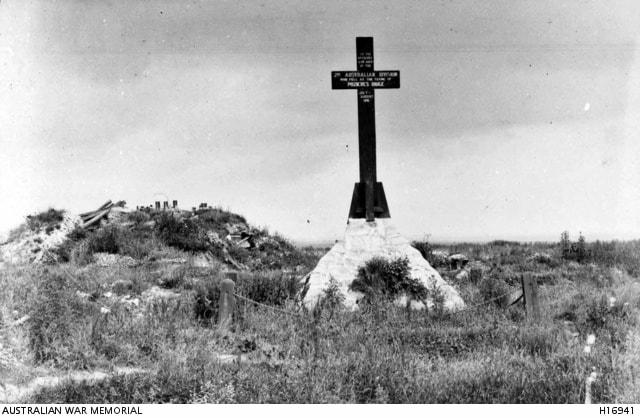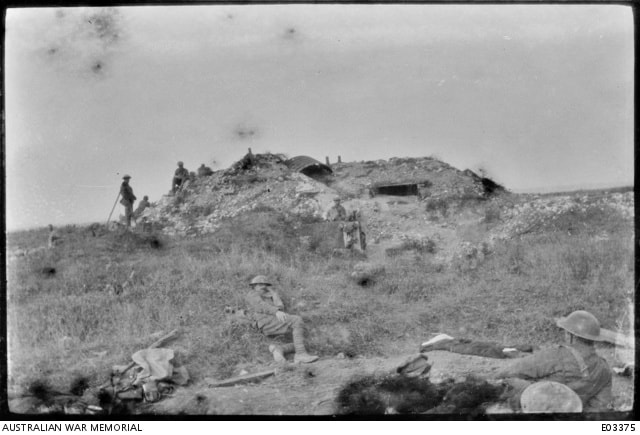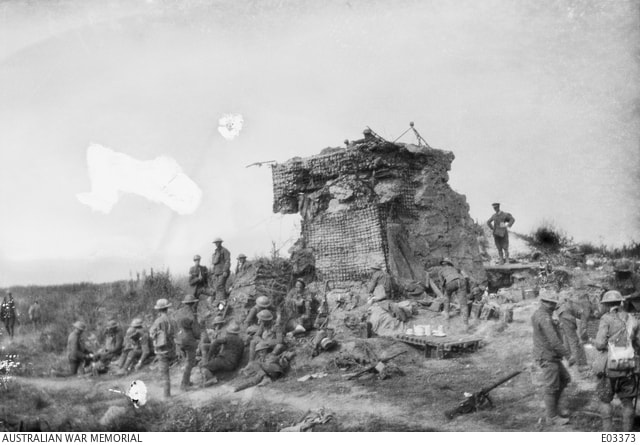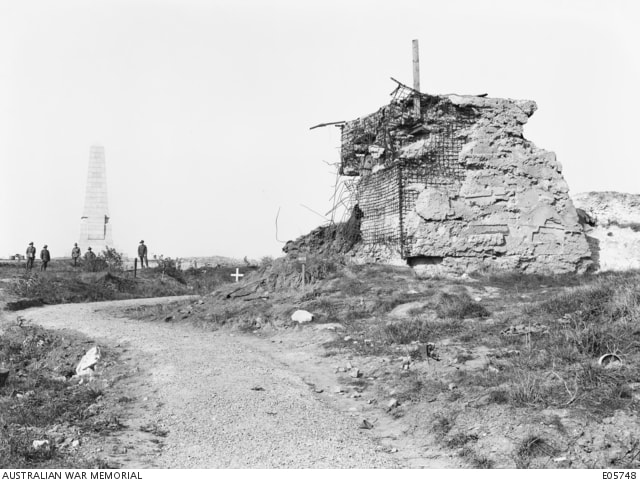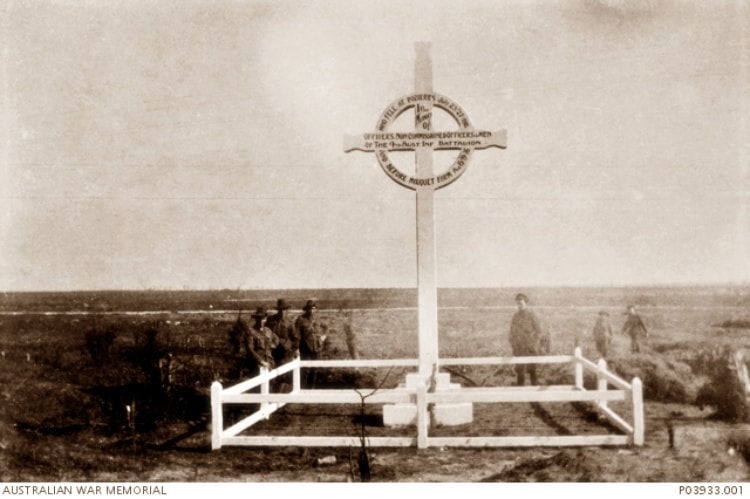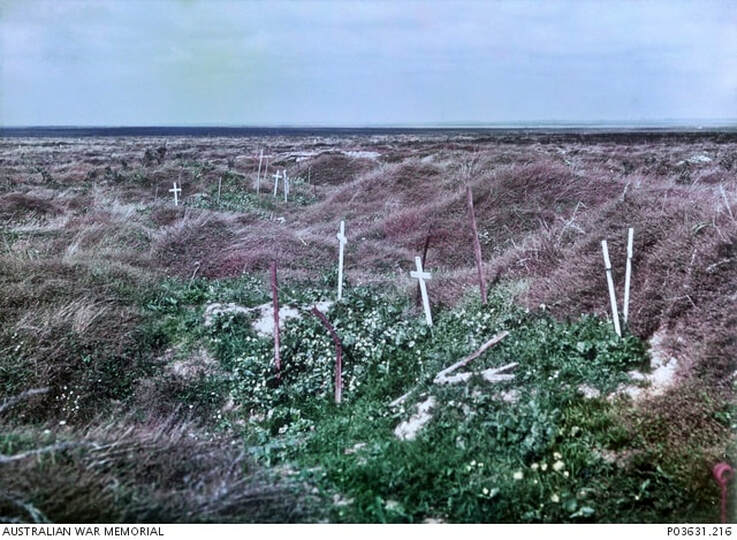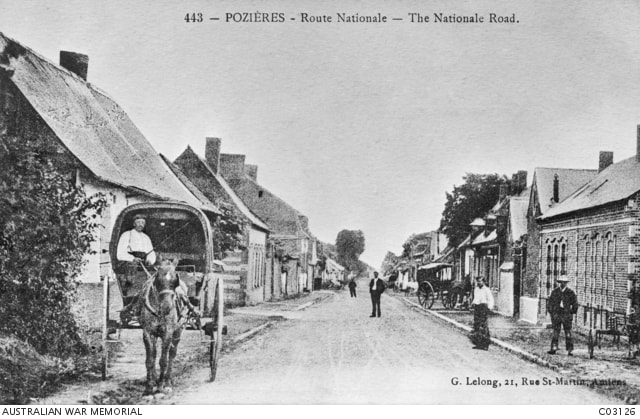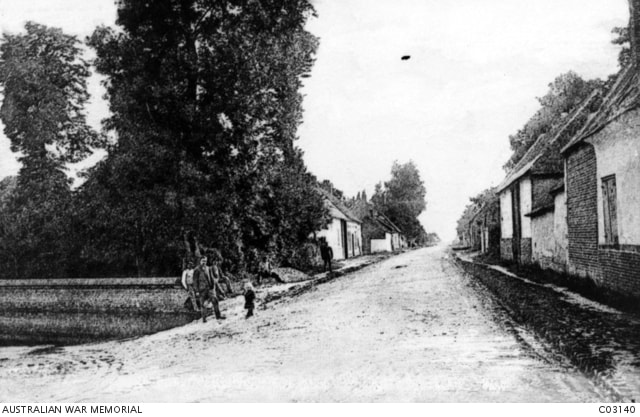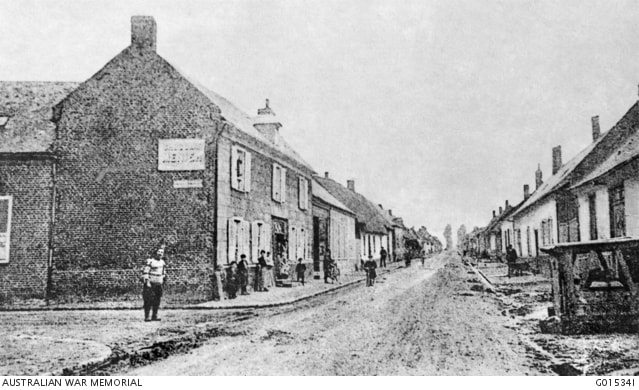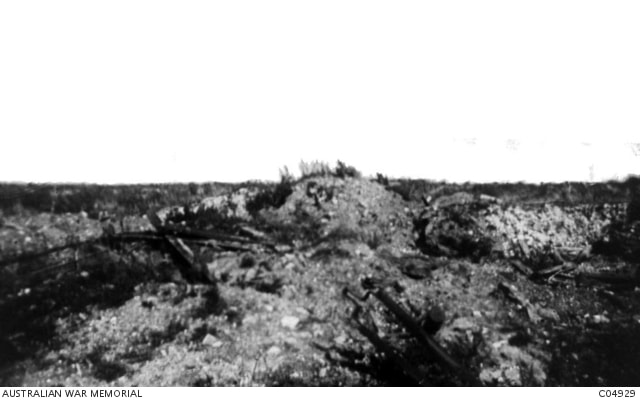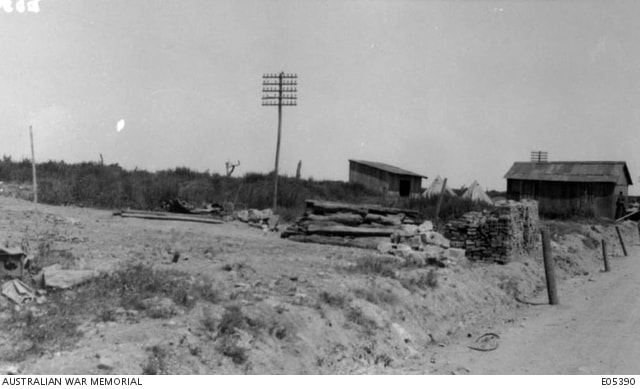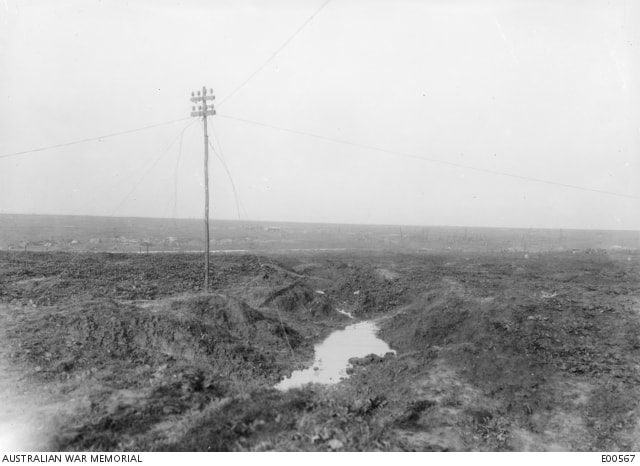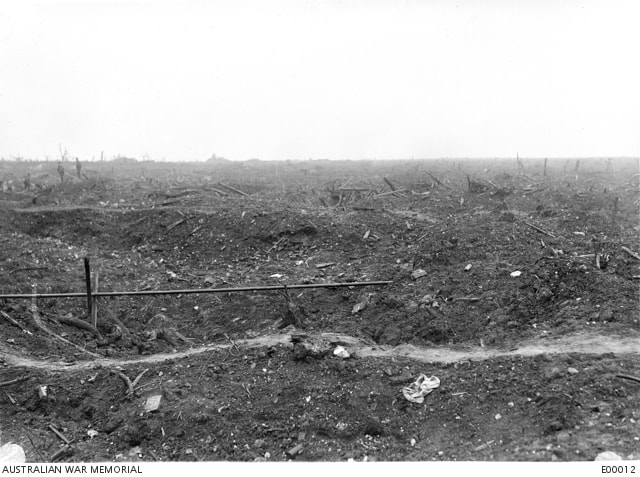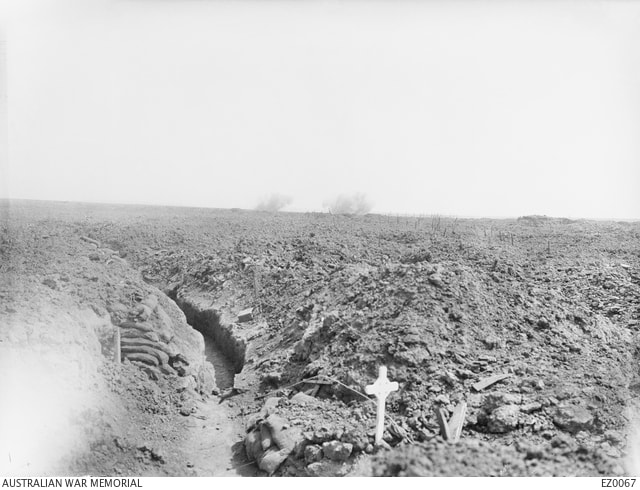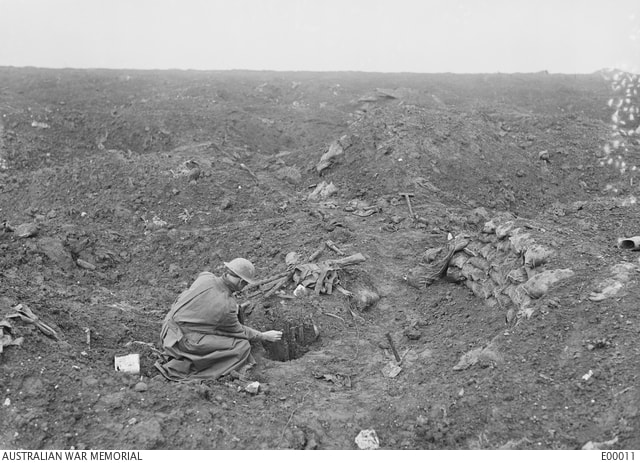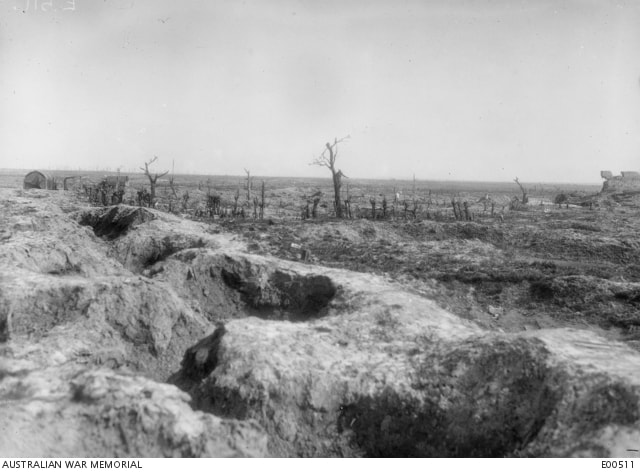POZIÈRES BRITISH CEMETERY
Ovillers-La-Boisselle
Somme
France
GPS Coordinates - Latitude: 50.03371, Longitude: 2.71551
Roll of Honour
Listed by Surname
Location Information
Pozieres is a village some 6 kilometres north-east of Albert, and the Cemetery, which is enclosed by the Pozieres Memorial, is a little south-west of the village on the north side of the main road (D929) from Albert to Pozieres.
Visiting Information
Wheelchair access is possible via a ramp.
Historical Information
The village of Pozieres was attacked on 23 July 1916 by the 1st Australian and 48th (South Midland) Divisions, and was taken on the following day. It was lost on 24-25 March 1918, during the great German advance, and recaptured by the 17th Division on the following 24 August.
Plot II of POZIERES BRITISH CEMETERY contains the original burials of 1916, 1917 and 1918, carried out by fighting units and field ambulances. The remaining plots were made after the Armistice when graves were brought in from the battlefields immediately surrounding the cemetery, the majority of them of soldiers who died in the Autumn of 1916, but a few represent the fighting in August 1918.
The following were among the more important burial grounds from which British graves were concentrated to Pozieres British Cemetery:-
CASUALTY CORNER CEMETERY, CONTALMAISON, on the road from Pozieres to Fricourt, used in the summer and autumn of 1916, which contained the graves of 21 Canadian soldiers, 21 Australian and 13 from the United Kingdom.
DANUBE POST CEMETERY, THIEPVAL (named from a trench and a Dressing Station), between the site of Thiepval village and Mouquet Farm. Here were buried, in the winter of 1916-17, 34 soldiers from the United Kingdom, mainly of the R.F.A.
NAB JUNCTION CEMETERY, OVILLERS-LA BOISSELLE, at the crossing of the Thiepval-Pozieres Road and "Nab Valley", in which 60 soldiers from the United Kingdom and one German prisoner were buried in the winter of 1916-17.
There are now 2,760 Commonwealth servicemen buried or commemorated in this cemetery. 1,382 of the burials are unidentified but there are special memorials to 23 casualties known or believed to be buried among them. There is also 1 German soldier buried here.
The cemetery is enclosed by the POZIERES MEMORIAL, which relates to the period of crisis in March and April 1918 when the Allied Fifth Army was driven back by overwhelming numbers across the former Somme battlefields, and the months that followed before the Advance to Victory, which began on 8 August 1918.
The Memorial commemorates over 14,000 casualties of the United Kingdom and 300 of the South African Forces who have no known grave and who died in France during the Fifth Army area retreat on the Somme from 21 March to 7 August 1918. The Corps and Regiments most largely represented are The Rifle Brigade with over 600 names, The Durham Light Infantry with approximately 600 names, the Machine Gun Corps with over 500, The Manchester Regiment with approximately 500 and The Royal Horse and Royal Field Artillery with over 400 names.
The cemetery and memorial were designed by W H Cowlishaw.
Pozieres is a village some 6 kilometres north-east of Albert, and the Cemetery, which is enclosed by the Pozieres Memorial, is a little south-west of the village on the north side of the main road (D929) from Albert to Pozieres.
Visiting Information
Wheelchair access is possible via a ramp.
Historical Information
The village of Pozieres was attacked on 23 July 1916 by the 1st Australian and 48th (South Midland) Divisions, and was taken on the following day. It was lost on 24-25 March 1918, during the great German advance, and recaptured by the 17th Division on the following 24 August.
Plot II of POZIERES BRITISH CEMETERY contains the original burials of 1916, 1917 and 1918, carried out by fighting units and field ambulances. The remaining plots were made after the Armistice when graves were brought in from the battlefields immediately surrounding the cemetery, the majority of them of soldiers who died in the Autumn of 1916, but a few represent the fighting in August 1918.
The following were among the more important burial grounds from which British graves were concentrated to Pozieres British Cemetery:-
CASUALTY CORNER CEMETERY, CONTALMAISON, on the road from Pozieres to Fricourt, used in the summer and autumn of 1916, which contained the graves of 21 Canadian soldiers, 21 Australian and 13 from the United Kingdom.
DANUBE POST CEMETERY, THIEPVAL (named from a trench and a Dressing Station), between the site of Thiepval village and Mouquet Farm. Here were buried, in the winter of 1916-17, 34 soldiers from the United Kingdom, mainly of the R.F.A.
NAB JUNCTION CEMETERY, OVILLERS-LA BOISSELLE, at the crossing of the Thiepval-Pozieres Road and "Nab Valley", in which 60 soldiers from the United Kingdom and one German prisoner were buried in the winter of 1916-17.
There are now 2,760 Commonwealth servicemen buried or commemorated in this cemetery. 1,382 of the burials are unidentified but there are special memorials to 23 casualties known or believed to be buried among them. There is also 1 German soldier buried here.
The cemetery is enclosed by the POZIERES MEMORIAL, which relates to the period of crisis in March and April 1918 when the Allied Fifth Army was driven back by overwhelming numbers across the former Somme battlefields, and the months that followed before the Advance to Victory, which began on 8 August 1918.
The Memorial commemorates over 14,000 casualties of the United Kingdom and 300 of the South African Forces who have no known grave and who died in France during the Fifth Army area retreat on the Somme from 21 March to 7 August 1918. The Corps and Regiments most largely represented are The Rifle Brigade with over 600 names, The Durham Light Infantry with approximately 600 names, the Machine Gun Corps with over 500, The Manchester Regiment with approximately 500 and The Royal Horse and Royal Field Artillery with over 400 names.
The cemetery and memorial were designed by W H Cowlishaw.
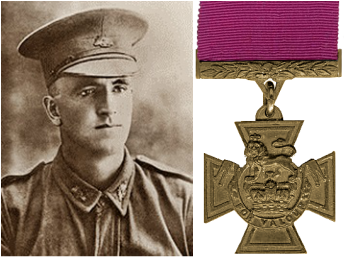
1352 Sergeant Claud Charles Castleton, V. C.
5th Coy. Australian Machine Gun Corps. Killed in action 29th July 1916, aged 23. Plot IV. L. 43.
Son of Thomas Charles and Edith Lucy Castleton, of 18, Wilson Rd., Lowestoft, England.
His headstone bears the inscription; "A Noble Life Laid Down For Freedom; We Shall Meet Our Loved One Again."
Citation: An extract from "The London Gazette", No. 29765, dated, 26th Sept., 1916, records the following:-"For most conspicuous bravery. During an attack on the enemy's trenches the infantry was temporarily driven back by the intense machine gun fire opened by the enemy. Many wounded were left in "No Man's Land" lying in shell holes. Serjt. Castleton went out twice in face of this intense fire and each time brought in a wounded man on his back. He went out a third time and was bringing in another wounded man when he was himself hit in the back and killed instantly. He set a splendid example of courage and self-sacrifice"
5th Coy. Australian Machine Gun Corps. Killed in action 29th July 1916, aged 23. Plot IV. L. 43.
Son of Thomas Charles and Edith Lucy Castleton, of 18, Wilson Rd., Lowestoft, England.
His headstone bears the inscription; "A Noble Life Laid Down For Freedom; We Shall Meet Our Loved One Again."
Citation: An extract from "The London Gazette", No. 29765, dated, 26th Sept., 1916, records the following:-"For most conspicuous bravery. During an attack on the enemy's trenches the infantry was temporarily driven back by the intense machine gun fire opened by the enemy. Many wounded were left in "No Man's Land" lying in shell holes. Serjt. Castleton went out twice in face of this intense fire and each time brought in a wounded man on his back. He went out a third time and was bringing in another wounded man when he was himself hit in the back and killed instantly. He set a splendid example of courage and self-sacrifice"
Images in this gallery © Werner Van Caneghem
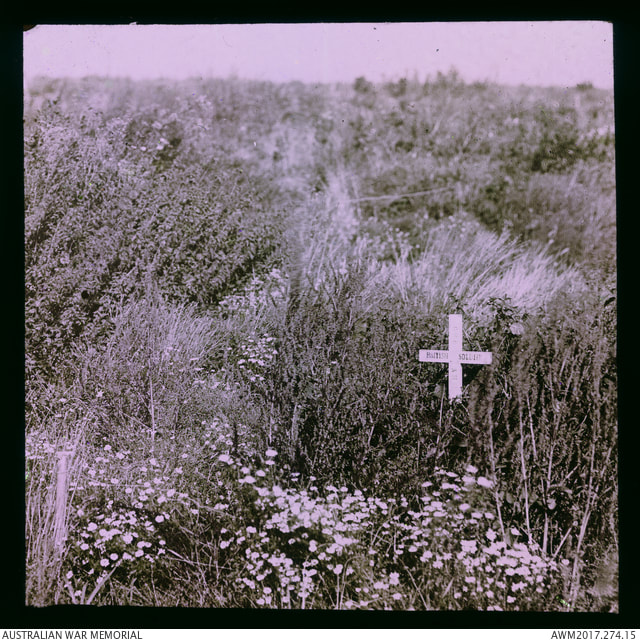
September 1917; An unidentified soldier's grave half obscured by wind sown flowers, on the old battlefield of Pozieres. The cross marking the grave reads 'British Soldier'. Photographers Hurley and Hubert Wilkins often walked the site of the former village of Pozieres during their visits to the British War Office photograph censor in 1917. Of the area, then covered by wild flowers, Hurley remarked following one of their visits: “one was beyond the war afflicted zone – (it being only about 30 miles away!!) and there was nothing whatever to convey any warlike impressions – everything was so quiet and peaceful”. The fighting returned to this area in March 1918.
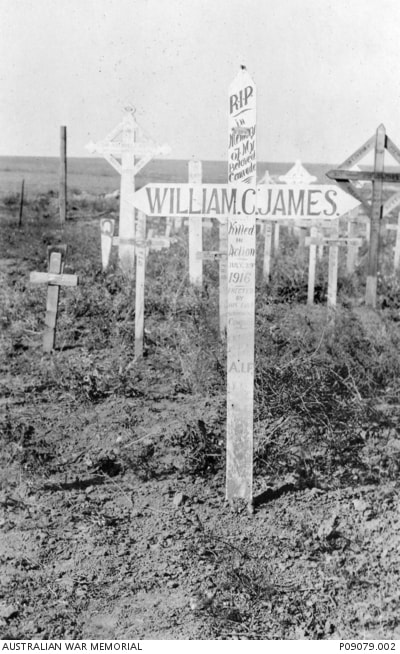
Grave of 3308 Private (Pte) William Charles James, 12th Field Ambulance Australian Army Medical Corps, of Richmond, Vic. A coachbuilder prior to enlistment he embarked from Melbourne on board HMAT Nestor (A71) on 11 October 1915. Pte James served in France; he was killed in action on 29 July 1916, aged 20. He is buried at the Pozieres British Cemetery, Ovillers-La Boisselle. The inscription on the cross reads "In memory of my beloved comrade".
1st Australian Division Memorial
|
c.1919; The 1st Australian Division memorial being erected. Unidentified soldiers and civilians, involved in the construction work, are congregated around the memorial.
|
The completed memorial dedicated to the members of the 1st Australian Division AIF, who died during the capture of Pozieres in July 1916.
|

4th February 1917; The battlefield in Pozieres near the school house where the 12th Battalion was entrenched. The grave is that of Captain Ivor Stephen Margetts, of Wynyard, Tas, who served in the 12th Battalion and was killed in action on 24 July 1916. The German Spring Offensive in 1918 re-captured this area and Margetts' grave was obliterated and was lost. His name is commemorated on the Villers-Bretonneux Memorial.
The Windmill
The Windmill site at Pozières was established as an Australian memorial in the 1930s at the suggestion of Australia's official war historian, Charles Bean, because, 'The Windmill site … marks a ridge more densely sown with Australian sacrifice than any other place on earth'. Over seven weeks in 1916, at the Battle of the Somme, the Australian Imperial Force suffered 23 000 casualties, more than 6700 of whom died, in the countryside around the Windmill. On 11 November 1993 soil from the Windmill site was cast over the coffin of Australia's Unknown Soldier during his funeral at the Australian War Memorial in Canberra.
© Commonwealth of Australia 2017
© Commonwealth of Australia 2017
'Gibraltar'
On the western edge of the village of Pozieres was a large, heavily fortified blockhouse, given the name 'Gibraltar' by British troops, it was captured from the Germans when the Australian First Division attacked, took and held Pozières village between 23 and 26 July 1916. It was later lost during the German offensive of 1918 and finally recaptured in August 1918.
Images of The Village of Pozières before and after the battle
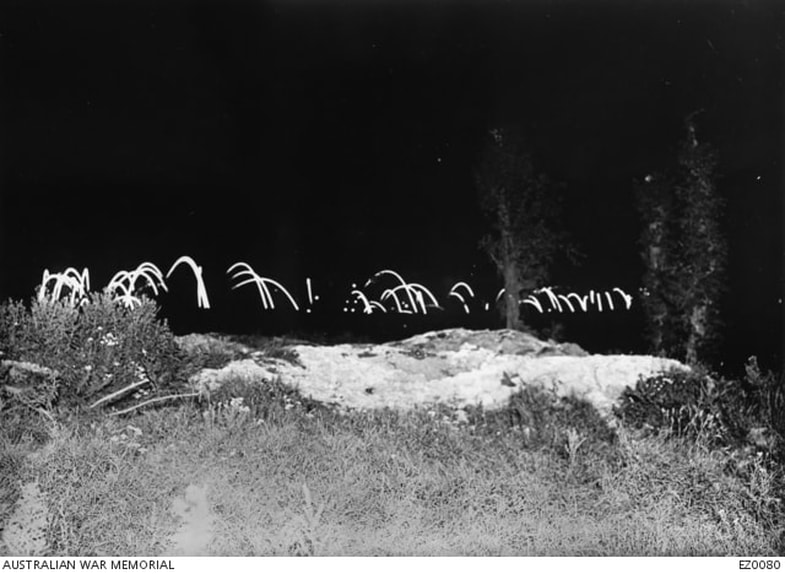
27th August 1916; Shell fire and flares towards Pozieres. The pinpoints are bursts of shrapnel. The curved lines show the effect on the negative of Verey lights sent up by the Germans from front line trenches to illuminate an area where a raid is expected. Verey lights were flares used for signalling at night and lighting; they came in several colours and were fired from a pistol.


